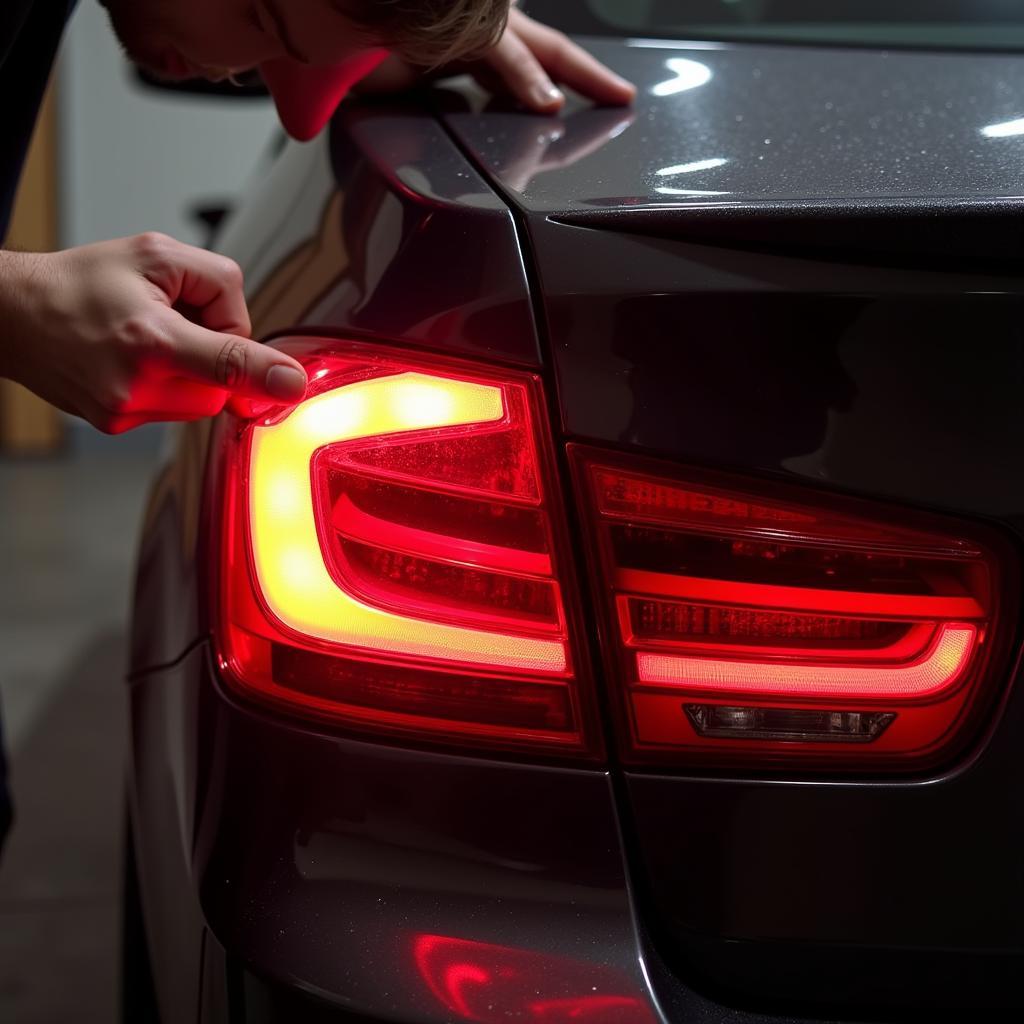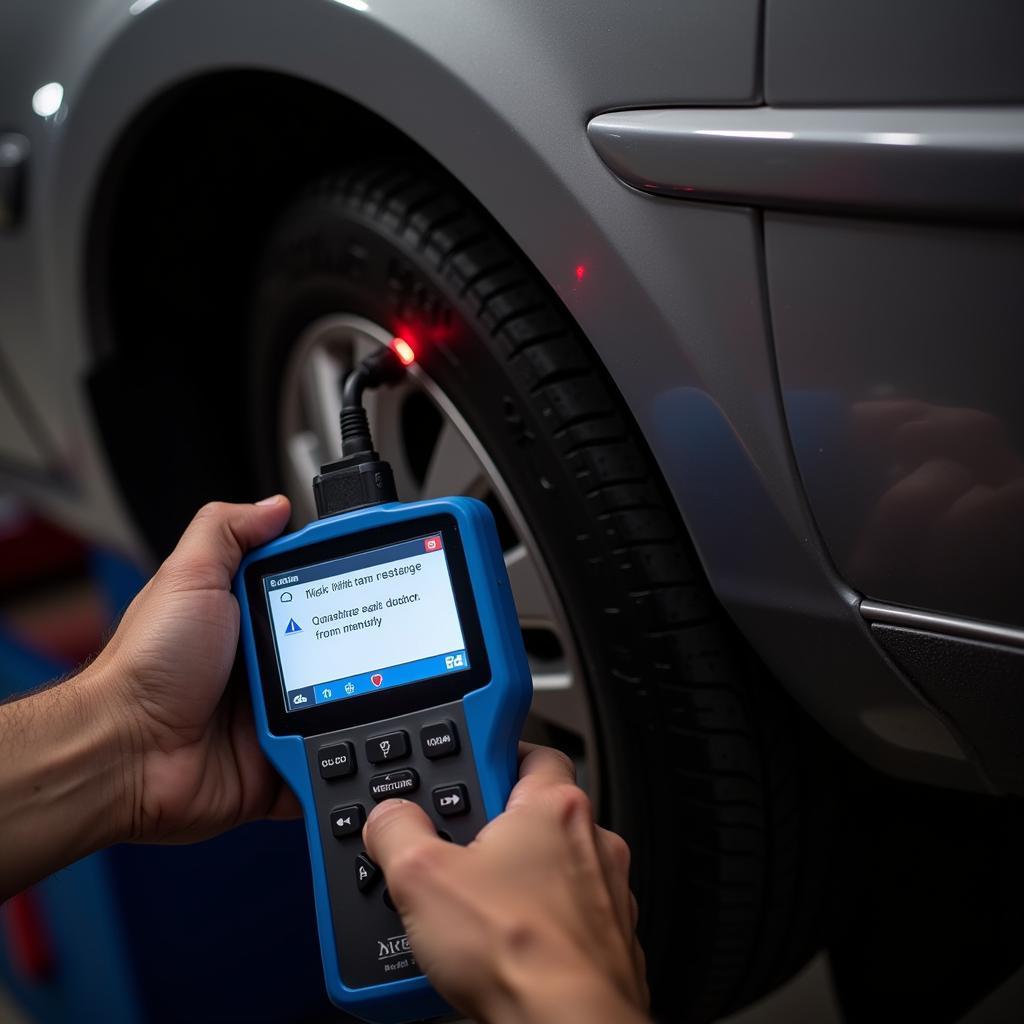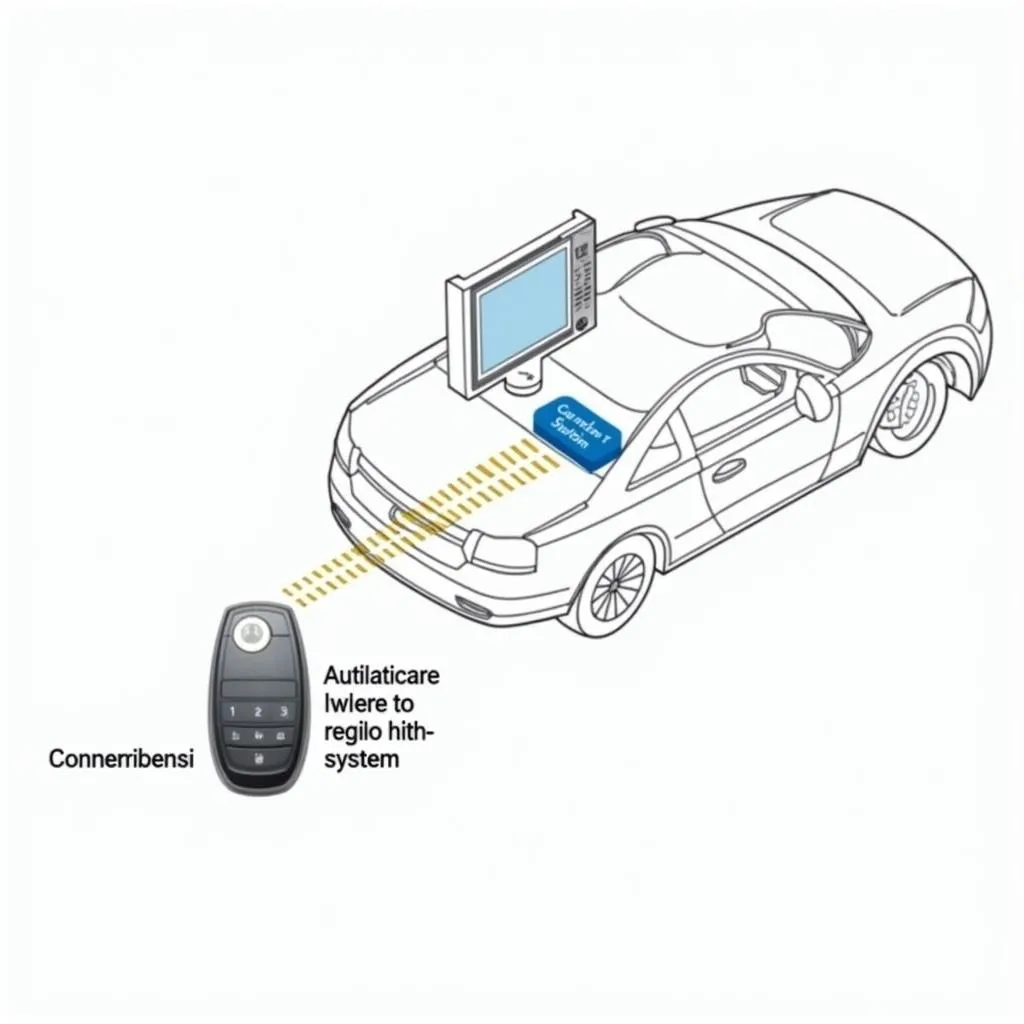The dreaded “check high mounted brake light” warning on your dashboard can be a real head-scratcher. This often-overlooked light plays a crucial role in your car’s safety system, alerting drivers behind you that you’re slowing down. Ignoring this warning could lead to dangerous situations, especially in low-light conditions or heavy traffic. This comprehensive guide will walk you through the common causes of a high mounted brake light warning, simple troubleshooting steps you can perform at home, and when it’s time to call in a professional.
Understanding the High Mounted Brake Light
Before we dive into troubleshooting, it’s important to understand what we’re dealing with. The high mounted brake light, also known as the center brake light or CHMSL (Center High Mounted Stop Lamp), is that extra brake light located in the center of your rear windshield or integrated into your spoiler. It illuminates brighter than your standard brake lights, providing an additional visual cue for drivers behind you to prevent rear-end collisions.
Why is My High Mounted Brake Light Warning On?
There are several reasons why your high mounted brake light warning might be illuminated, ranging from simple issues to more complex electrical problems:
- Burnt Bulb: The most common culprit is a simple burnt-out bulb. Like any other bulb, your CHMSL bulb has a limited lifespan and will eventually need replacement.
- Blown Fuse: The high mounted brake light circuit is protected by a fuse in your vehicle’s fuse box. A blown fuse could be caused by a power surge, a short circuit, or simply an aging fuse.
- Faulty Wiring: Over time, the wiring harness leading to your high mounted brake light can become damaged or corroded, leading to a break in the circuit. This is more common in older vehicles or those exposed to harsh weather conditions.
- Brake Light Switch Malfunction: The brake light switch, located behind your brake pedal, is responsible for activating your brake lights when you depress the pedal. A faulty switch can prevent the signal from reaching the high mounted brake light.
- Damaged Light Assembly: Physical damage to the light assembly itself, such as a crack in the lens or a broken housing, can also trigger the warning light.
Troubleshooting Your High Mounted Brake Light Warning
 Inspecting a High Mounted Brake Light
Inspecting a High Mounted Brake Light
Before heading to a mechanic, there are a few simple checks you can perform at home:
- Inspect the Bulb: Open your trunk or rear hatch and visually inspect the high mounted brake light bulb. Look for any signs of burning, blackening, or a broken filament. If you suspect a burnt bulb, try replacing it with a new one of the correct type. You can usually find the correct bulb specification in your vehicle’s owner’s manual.
- Check the Fuse: Locate your vehicle’s fuse box, usually found under the dashboard or in the engine compartment. Consult your owner’s manual to identify the correct fuse for your high mounted brake light circuit. Remove the fuse and inspect it for any signs of burning or a broken wire. If you find a blown fuse, replace it with a new one of the same amperage rating.
- Examine the Wiring: Visually inspect the wiring harness leading to your high mounted brake light for any signs of damage, such as fraying, cuts, or corrosion. If you find any damage, you’ll likely need to replace the affected section of the wiring harness.
When to Seek Professional Help
 Diagnosing a Car Issue
Diagnosing a Car Issue
If you’ve checked the bulb, fuse, and wiring and are still unable to resolve the issue, it’s time to seek professional help. More complex problems, such as a faulty brake light switch or issues with the vehicle’s electrical system, require specialized knowledge and tools to diagnose and repair.
Here at Car Diagnostic Tech, we specialize in remote automotive diagnostics, programming, and software installation to fix a variety of car problems, including those pesky warning lights. We can help you get to the bottom of your high mounted brake light warning and provide the necessary solutions to get you safely back on the road.
Common High Mounted Brake Light Issues by Car Model
While the troubleshooting steps above apply to most vehicles, certain models are known to have specific issues related to their high mounted brake lights. Here are a few examples:
-
2002 Accord Brake Lamp Warning Light: Some Honda Accord models from the early 2000s experienced problems with the brake light switch itself, causing intermittent or complete failure of the brake lights, including the high mounted brake light. For more information on the 2002 Accord brake lamp warning light, visit our dedicated page: 2002 accord brake lamp warning light.
-
Porsche Cayenne Brake Light Warning: Certain Porsche Cayenne models have reported issues with the wiring harness near the tailgate hinge, which can become pinched or damaged over time, leading to a high mounted brake light malfunction. To learn more about resolving the Porsche Cayenne brake light warning, check out our detailed guide: porsche cayenne brake light warning.
-
Brake Light Warning 2000 Volvo S70: The Volvo S70, particularly models from the early 2000s, have been known to experience problems with the electrical contacts within the high mounted brake light assembly itself, leading to a poor connection and a dim or non-functioning light. You can find specific troubleshooting tips for the brake light warning on the 2000 Volvo S70 here: brake light warning 2000 volvo s70.
Don’t Ignore Your High Mounted Brake Light Warning
Remember, a functioning high mounted brake light is essential for your safety and the safety of others on the road. By understanding the common causes of this warning light and performing simple checks, you can often resolve the issue yourself. However, for more complex problems, it’s crucial to seek professional help.

